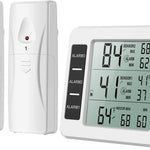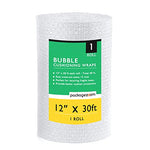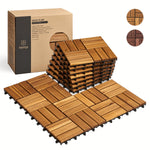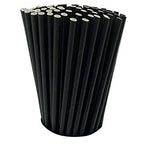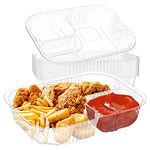You have no items in your shopping cart.
Welcome to the ultimate guide on garbage disposal tools! If you've ever been frustrated with food waste taking up space in your kitchen or worried about contributing to environmental issues, a garbage disposal tool is the perfect solution. This comprehensive article aims to provide you with all the essential information, tips, and tricks to become a pro at using and maintaining your garbage disposal tool efficiently.
Garbage Disposal Tool: What Is It and How Does It Work?
The garbage disposal tool, also known as a garbage disposal unit, is an electrically powered kitchen appliance designed to shred food waste into small pieces, making it easier to dispose of through the plumbing system. The unit is typically installed under the kitchen sink and works by grinding and breaking down food scraps, which then flow through the plumbing pipes and get treated at wastewater treatment facilities. The garbage disposal tool helps reduce landfill waste and minimizes odors in the kitchen.
Benefits of Using a Garbage Disposal Tool
Owning a garbage disposal tool offers numerous advantages, making it a must-have kitchen appliance. Let's explore some of the key benefits:
-
Reduced Food Waste: The garbage disposal tool enables you to dispose of food scraps immediately, reducing the amount of organic waste that ends up in the trash bin.
-
Environmental Benefits: By diverting food waste from landfills, you help reduce methane emissions, which significantly contribute to climate change.
-
Convenience: Instead of collecting food waste in a separate container, you can quickly and effortlessly grind it down with the garbage disposal tool.
-
Cleaner Kitchen: Say goodbye to foul odors from decaying food in the trash can, as the garbage disposal tool prevents food waste from sitting for extended periods.
-
Less Clogged Drains: The appliance grinds food into smaller particles, minimizing the risk of clogged drains caused by large scraps.
-
Saves Money: With less waste going to landfills, you can potentially reduce your trash pickup frequency and save money in the long run.
-
Supports Wastewater Treatment: The processed food waste can be turned into useful byproducts during wastewater treatment.
Choosing the Right Garbage Disposal Tool
Selecting the perfect garbage disposal tool for your needs can be overwhelming with so many options available. Here are some factors to consider while making your decision:
-
Power and Horsepower: Higher horsepower means a more powerful motor capable of handling tough food scraps. Consider your household's size and usage to determine the appropriate horsepower.
-
Grind Stages: Some units offer multiple grind stages, which further break down food waste for smoother disposal.
-
Continuous Feed vs. Batch Feed: Continuous feed models allow you to add waste while the unit is running, while batch feed models require a stopper and operate in batches.
-
Noise Level: Look for units with noise insulation if a quieter operation is essential to you.
-
Durability and Warranty: Invest in a reliable brand with a long warranty period to ensure longevity and peace of mind.
-
Size and Installation: Measure the space under your sink to ensure the selected model fits without issues.
-
Safety Features: Check for safety measures like overload protection and a manual reset button.
Installation of Your Garbage Disposal Tool
Once you have chosen the perfect garbage disposal tool for your kitchen, it's time to install it. While professional installation is recommended, if you're a handy DIY enthusiast, follow these general steps:
-
Safety First: Turn off the power at the circuit breaker and disconnect the sink drain pipes.
-
Mounting the Unit: Attach the garbage disposal unit to the mounting assembly under the sink.
-
Connect the Plumbing: Connect the unit's discharge pipe to the sink's drainpipe and the dishwasher drain if applicable.
-
Test the Installation: Reconnect the power and run water through the disposal unit to check for leaks and proper functioning.
-
Troubleshooting: If you encounter any issues during installation, consult the manufacturer's manual or seek professional help.
Operating Your Garbage Disposal Tool Safely
A garbage disposal tool is a powerful appliance, so it's essential to operate it safely to prevent accidents and prolong its lifespan:
-
Cold Water Rule: Always use cold water while running the disposal to solidify any grease, preventing clogs.
-
Run Water Before and After: Turn on the water before running the disposal and leave it on for a few seconds after turning it off to flush out debris.
-
Avoid Non-Food Items: Only dispose of food scraps, and avoid putting non-food items or hard objects into the unit.
-
Cut Waste into Small Pieces: Cut large food items into smaller pieces to ease the grinding process.
-
Avoid Fibrous Foods: Refrain from disposing of fibrous foods like banana peels, celery, or artichokes, as they can tangle the unit's blades.
-
No Grease or Oil: Grease and oil should not be put down the disposal, as they can solidify and lead to blockages.
-
Regular Cleaning: Periodically clean your garbage disposal tool using mild soap, and citrus peels to remove any odors.
Maintaining Your Garbage Disposal Tool
Regular maintenance ensures optimal performance and extends the life of your garbage disposal tool. Follow these maintenance tips:
-
Grinding Ice Cubes: Occasionally grind ice cubes to clean and sharpen the blades.
-
Citrus Freshness: Use citrus peels to maintain a fresh-smelling disposal.
-
Avoid Harsh Chemicals: Do not use harsh chemicals to clean the unit, as they can damage the disposal.
-
Clean with Baking Soda and Vinegar: A mixture of baking soda and vinegar can effectively clean and deodorize the disposal.
-
Inspect for Leaks: Periodically check for leaks under the sink to address any plumbing issues promptly.
-
Use Regularly: Frequent use prevents rust and corrosion.
Common Issues and Troubleshooting
Even with proper care, you might encounter occasional issues with your garbage disposal tool. Here are some common problems and troubleshooting tips:
-
Jamming: If the disposal jams, turn off the power and use a wrench to manually rotate the blades from underneath.
-
Humming Noise: A humming sound without grinding indicates a jam or a faulty motor. Check for jams and reset the unit.
-
Leaks: Leaks can occur due to loose connections or damaged pipes. Tighten connections or replace damaged parts.
-
Foul Odors: To combat odors, grind citrus peels or use a mixture of baking soda and vinegar.
-
Resetting the Unit: If the disposal stops working, locate the reset button on the bottom of the unit and press it to reset.
-
Lack of Power: If the disposal does not turn on, check the circuit breaker or electrical connections.
FAQs about Garbage Disposal Tools
Q: Can I dispose of all food waste in the garbage disposal tool?
A: While most food scraps can be disposed of using the tool, avoid putting in hard items like bones or fibrous foods like celery.
Q: Can I install a garbage disposal tool on my own?
A: If you have some plumbing experience, you can attempt the installation yourself. However, professional installation is recommended for safety and proper setup.
Q: How long do garbage disposal tools typically last?
A: With proper care and maintenance, a garbage disposal tool can last between 10 to 15 years.
Q: Are garbage disposal tools eco-friendly?
A: Yes, they are environmentally friendly, as they reduce landfill waste and methane emissions.
Q: Can I use the garbage disposal tool with a septic system?
A: Yes, but you need to choose a garbage disposal tool specifically designed for septic systems.
Q: Can I put eggshells in the garbage disposal?
A: Yes, eggshells are safe for the disposal and can even help clean the unit's walls.
Congratulations! You are now well-informed about the benefits, operation, installation, maintenance, and troubleshooting of garbage disposal tools. By incorporating one into your kitchen, you not only enjoy the convenience of disposing of food waste easily but also contribute positively to the environment by reducing landfill waste. Remember to operate the garbage disposal tool safely and perform regular maintenance to ensure its longevity and efficiency.


